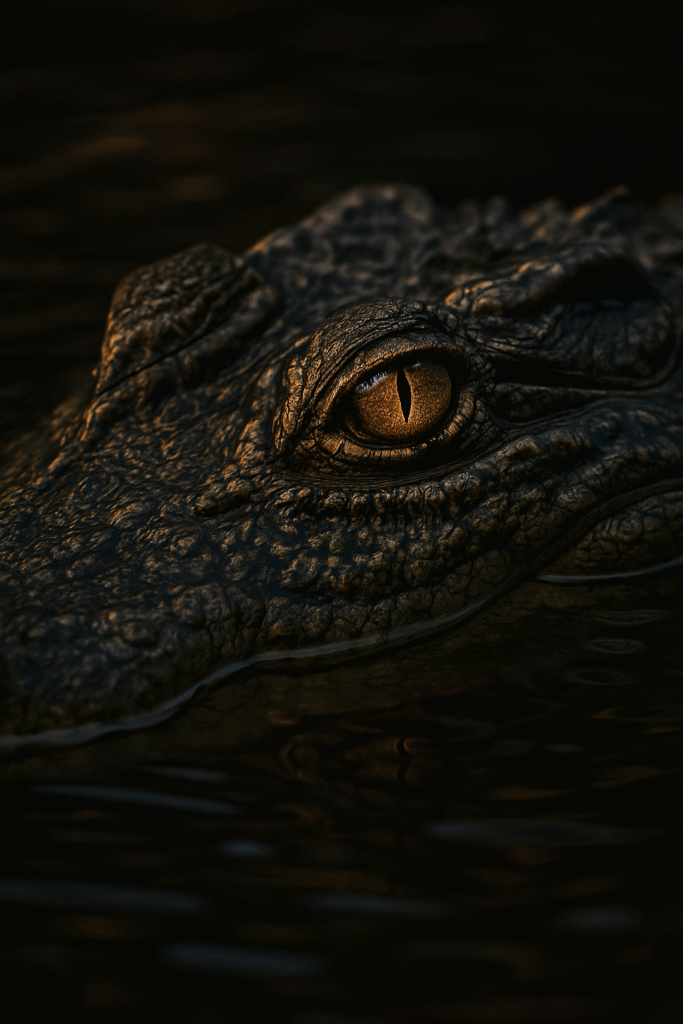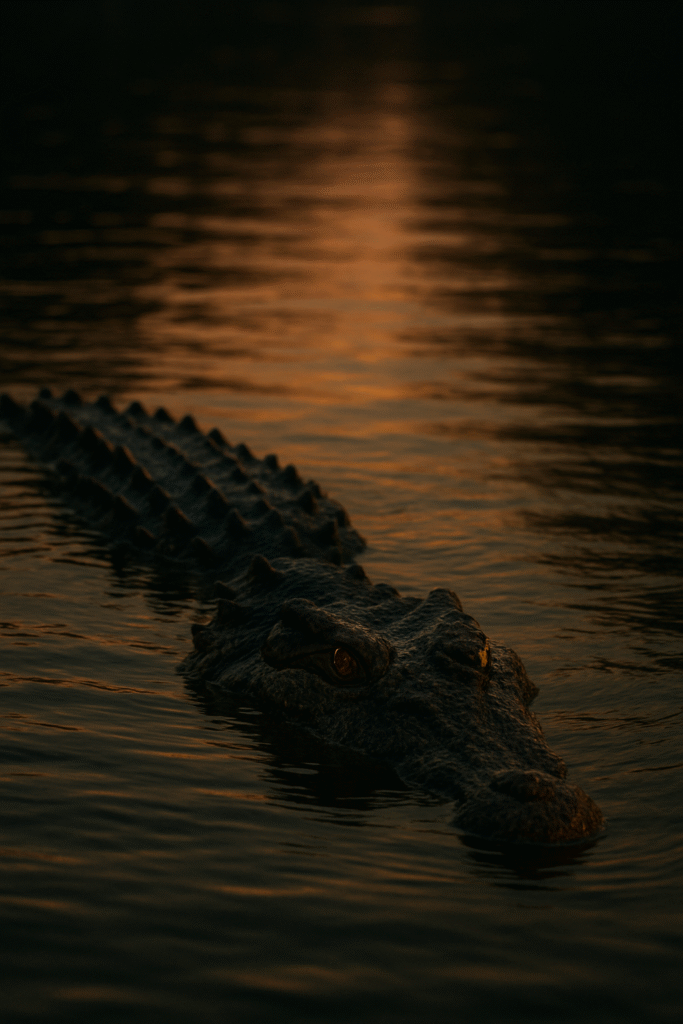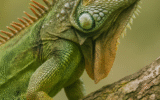They emerge in silence, cloaked in patience. A lizard basking on a stone, its body storing sunlight like an ancient battery. A snake uncoiling beneath roots, moving not with feet but with fluid geometry. A crocodile rising from the Nile, armored in plates as old as pyramids. Reptiles are not merely animals; they are echoes of prehistory, reminders of a world before mammals ruled, before flowers bloomed, before humans dreamed.

For more than 300 million years, they have survived fire, flood, ice, and the fall of giants. They were the kin of the dinosaurs, the architects of dragon myths, the guardians of temples and rivers. Today they live in deserts, rainforests, and wetlands — in places where heat and stillness conspire to test endurance. To encounter a reptile is to look into a mirror that reflects both time’s depth and humanity’s imagination.
Origins in Deep Time
Reptiles arose in the Carboniferous Period, about 320 million years ago, when amphibians first crawled onto land but remained chained to water. The reptiles broke free. Their amniotic egg — a miracle of biology — allowed them to reproduce away from swamps, encasing the embryo in a self-contained world of fluid and protection. That egg was a revolution: it opened the drylands, the deserts, the mountains.
From this innovation spread lineages that would give rise to the dinosaurs, pterosaurs, plesiosaurs, and the great reptilian rulers of the Mesozoic. When the meteor struck and fire rained, it was not only mammals that endured. Reptiles, with their slow metabolisms and ancient cunning, survived. The crocodile today is not a descendant of dinosaurs but their cousin, its lineage largely unchanged for 200 million years. To look into a crocodile’s eye is to see through a window in time.
Anatomy of Endurance
The reptile’s gift is not speed, nor warmth, nor softness. It is efficiency. Cold-blooded metabolism allows reptiles to thrive on little food, to wait for hours, days, weeks, motionless until the strike is worth the effort. Their bodies are armored in keratinous scales — dazzling mosaics of geometry — which keep water locked within, making survival possible in deserts where mammals falter.

Their abilities verge on the mythical:
- The gecko, climbing glass walls with microscopic hairs that defy physics.
- The chameleon, shifting colors through chromatophore orchestras hidden beneath its skin.
- The snake, unhinging its jaw to consume prey larger than its own head.
- The crocodile, slowing its heartbeat to three beats per minute, sinking into a deathlike patience before exploding in violence.
Where mammals radiate warmth, reptiles radiate mystery. They are creatures of stillness, teachers of waiting.
Ecological Architects
Reptiles shape their ecosystems with invisible authority. Snakes regulate rodent populations, keeping plagues at bay. Turtles ferry nutrients across rivers and wetlands, carrying algae, seeds, and small organisms on their shells. Crocodiles, feared as monsters, create habitats by digging “gator holes” that sustain fish, birds, and insects during drought.
Their role is one of balance: predator and prey, destroyer and nurturer. Remove reptiles, and the web trembles. Their survival is not just their own — it is the survival of the ecosystems they anchor.
Reptiles in Myth and Symbol
If reptiles unsettle us, it is because they speak to the oldest parts of our imagination.
- The serpent winds through every mythology: the Ouroboros of Egypt devouring its tail, symbolizing eternity; the serpent of Eden, whispering forbidden knowledge; Quetzalcoatl, the feathered serpent of Mesoamerica, a god of wind and learning.
- The crocodile was revered as Sobek in Egypt, protector of the Nile’s fertility, both feared and worshiped.
- The turtle bears the cosmos in Hindu and Chinese cosmology, its shell the vault of heaven, its plastron the foundation of earth.
- Dragons, though mythical, are stitched together from reptilian features: scales, wings, venom, fire. They are memory and myth fused, an archetype of power and chaos.
Humanity has always cast reptiles as threshold beings — halfway between this world and another, between creation and destruction.
Reptiles in Antiquity and Beyond
The ancients lived with reptiles as constant presences. Egyptians embalmed crocodiles, their teeth gleaming in desert tombs. In Greece, snakes coiled at the staff of Asclepius, god of healing, symbolizing renewal. In medieval Europe, the dragon was a cipher for the wild, the untamed — a monster to be slain so that civilization might advance.
Even today, our fears and fascinations are relics of those myths. A snake in the grass evokes betrayal. A dragon tattoo evokes strength. A turtle figurine promises longevity. The reptile survives not only in ecosystems but in culture’s deep memory.
Science, Conservation, and the Fragile Future
Modern herpetology — the study of reptiles and amphibians — reveals a paradox: the most ancient survivors are among the most vulnerable. Half of the world’s reptiles face threats from habitat destruction, climate change, and the illegal pet trade. Turtles drown in plastic seas. Lizards lose deserts that bloom into cities. Snakes are slaughtered in superstition.

Their endurance has limits. The meteor they survived was a natural catastrophe; the catastrophe they face now is human. To lose them would not only unravel ecosystems — it would erase one of our last living links to deep time.
Philosophical Reflection: The Mirror of Reptiles
What do reptiles teach us? They are symbols of endurance without hurry, of transformation without waste. They remind us that life does not always require speed or noise — sometimes it requires patience, stillness, and an ability to bend rather than break.
In their eyes we see not affection but presence. Not companionship but continuity. They are not ours to tame; they are ours to respect, as reminders that nature is older, stranger, and more enduring than we are.
Closing Scene: Twilight on the Nile
The sun falls over the Nile. Papyrus reeds whisper. A crocodile drifts just beneath the surface, its armored back breaking the water like an island. The river glows gold, but its eyes are older than gold — yellow lanterns of a creature that remembers when the Sahara was green. It waits, unmoving, as it has waited for epochs. In that stillness lies the memory of dinosaurs, the weight of myth, the truth of survival.
The reptile is not past. It is continuity made flesh. To watch it breathe is to watch history breathe.


Reply